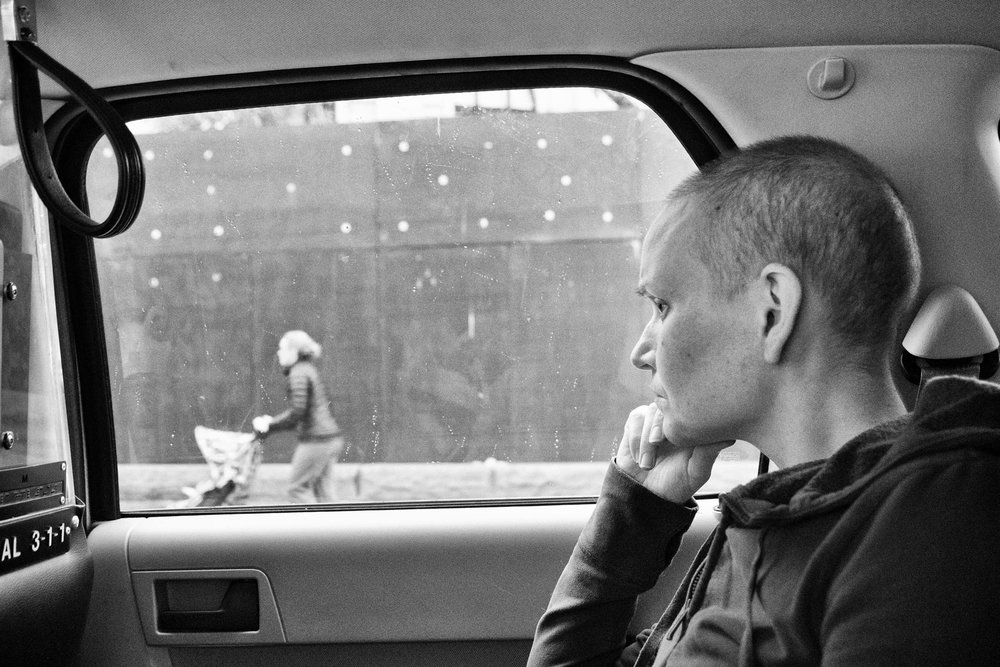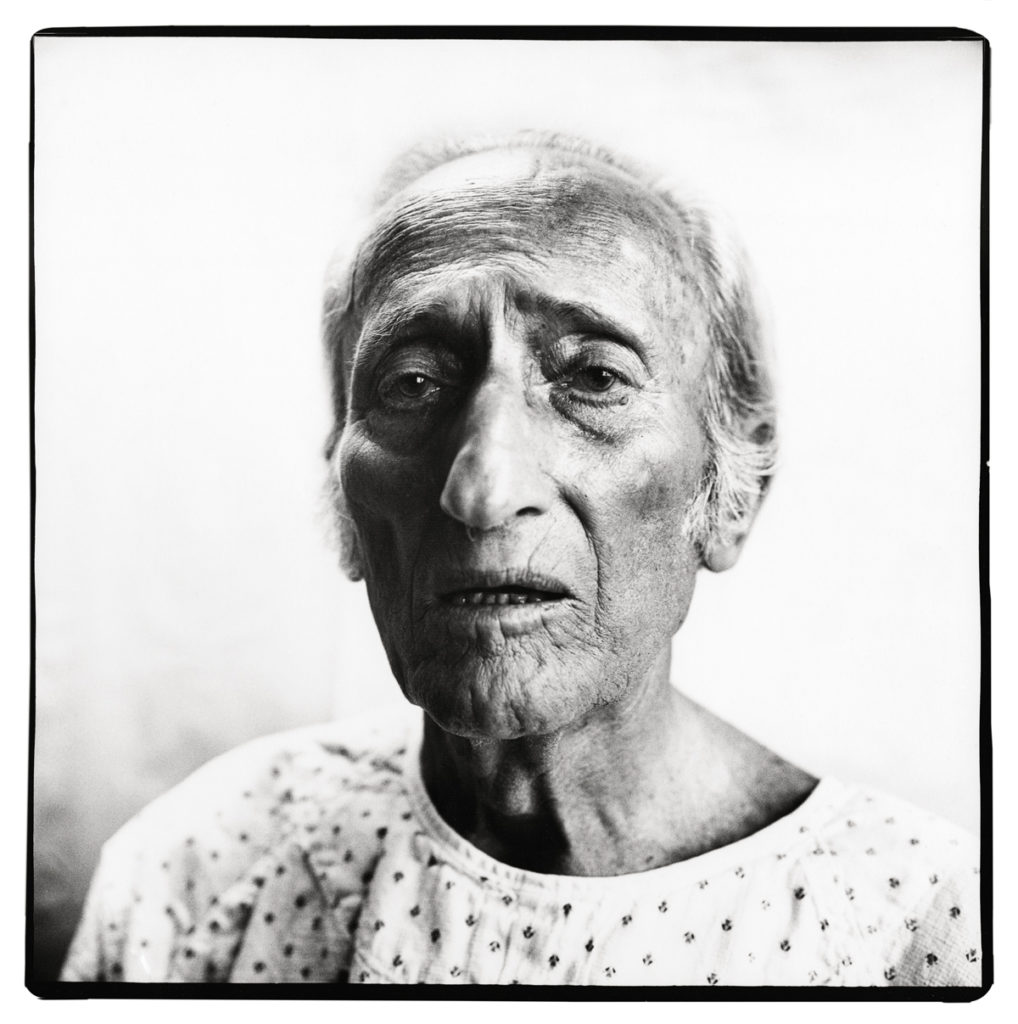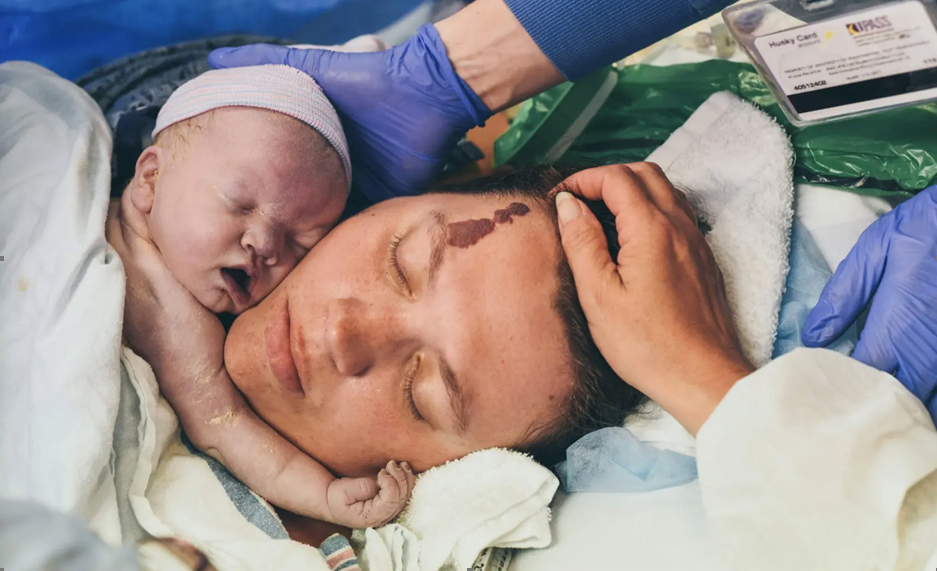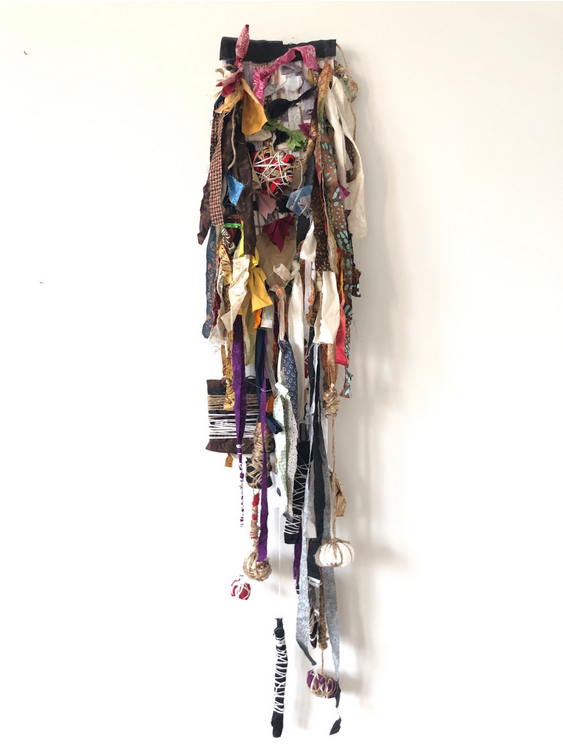I think this is a crucial question which I need to consider as a foundation for my work. Why, at times of great stress and personal hardship, do humans feel a need to record the death process whether this is through capturing a photographic record, writing about the experience or through the creation of artworks?
Is there something specific about loss that compels humans to attempt to try and keep a hold of the moment and of what might be about to be lost? I am not talking here about the sense of a wake where an individual might be remembered and their life celebrated, perhaps in a way of saying goodbye. My question is more about capturing the process of change or loss to replay it at a future moment which seems to point to wanting to keep that moment alive and current.
There are many examples I could choose to illustrate my point but I will initially look at just four.
The very beautiful and poignant photographs taken by Italian photographer, Angelo Merendino documenting his wife Jennifer’s breast cancer journey from diagnosis shortly after their wedding to her death less than four years later. The couple agreed he would photograph her and they would share their experiences.

Figure 1 – Angelo Merendino, ‘Jennifer Merendino’, (2008-2011)
When I look at Angelo Merendino’s photographs, the visceral pain and emotion is to the fore.
Angelo Merendino and his wife used photography to tell a story and to publicise her condition at a time when information wasn’t as readily available as it is now. In a video on Tedx, Angelo explains the technical side of cancer, “Our life was a maze filled with doctor’s appointments and medical procedures, medications, side effects.” (Merendino, 2014).
Richard Avedon, the American fashion photographer took a series of photographic portraits of his terminally ill father, Jacob Israel Avedon.

Figure 2 – Richard Avedon, ‘Jacob Israel Avedon’, (1974)
Avedon’s photographs of his father have a different tone to those of Merendino. Avedon’s portraits convey pain through the human expression rather than through events and scenery. I think Jacob in these photographs seems to have a sense of collapse as if he is shrinking before our eyes. Richard Avedon speaks of the performance of the act of taking the portrait and the balance between his father and how he presented himself to the lens and of him as a photographer dealing with the performance in front of him. The portraiture became a shared experience between the father and the son. The photographer was asked how he felt about taking these photographs of his dying father. His reply was that the images show “what it is to be any one of us.” (Berger, 2004)
Caroline Catlin is an American photographer and writer. She suffers from brain cancer but takes time to volunteer to take photographs of the last moments of people’s lives. The images she creates are of strangers so this has a very different feel to the work of Merendino or Avedon. She says, “Often, I am asked why I choose to photograph the end of a child’s life. When I am in those rooms, I am present with the sole goal of finding the moments within grief that feel the most gentle and human: Watching a mother brush the hair of her dying child, I was able to recognize the love and tenderness that accompanies us even in death. Listening to a child cry over the loss of his sister, and then get back up and start playing again next to her body, reminded me of the resilience we all carry with us, that my family and friends are capable of as well. They will also continue to live on if I die too soon“. (Catlin, 2019)

Figure 3 – Caroline Catlin, 2019
A newborn and his mother after his birth, on May 7, 2019, at the University of Washington Medical Center. He died a few moments after he was born.
In a talk, Catlin speaks of the families of those about to die and of the moments she tries to capture of “the moments of grace and beauty we assume don’t exist in those desperate places. In the hardest moments imaginable, those families, they choose to love, despite and because of it all.” (Catlin, 2020). Interestingly Catlin also speaks of death itself rarely being beautiful. I have come across people with that same upbeat sense as Catlin has and there is something about it which jars and doesn’t fit comfortably with my own views.
I look at these works there is huge resonance with my own experiences. Jennifer Menendino looking out that car window at a mother and her child in a push chair and the certainty that she will never be a mother. Catlin echoes the exact same thoughts saying, “I will never be at peace with the fact I might not get to be a mother. That I might not see my brothers get married, that I probably won’t become old.” (Catlin, 2020) There is a Ying and Yang here at play, the awareness of yourself and what has been lost and at same time the envy of what other’s might have maybe without even realising. I recognise the haunted look Richard Avedon has captured in his father Jacob as he stares back at us dressed in his hospital gown. I believe that such hospital gowns are an example of a kind of stripping away of the personality and humanity of the patient. The gowns are there for better control of infection but just like medical equipment, medicines, the timetable for delivery of such medicines, the very structure of hospitals with medical rounds, breakfast, cleaning, bed making etc etc, the medical investigations and treatment, all seem to focus on technical and medical need rather than the human need and comfort of the patient, their friends or family.
The projects above use straight photography. An artist who took a different approach is writer and art historian, Debra Brehmer. She speaks of taking photographs as her mother was dying. Studying her hair, face and hands trying to preserve that moment. She went on to construct work from strips of cloth, string, cord and rope and flowers made from Styrofoam. She says, “I had unknowingly made a symbolic body, a portrait of sorts, of my mother, with her apron string dangling.” (Brehmer,2021) The textile body Brehmer had created was, “a new vessel for her as she relinquished flesh and heartbeat“. (Brehmer,2021)

Figure 4 – Debra Brehmer, Debra Brehmer, “Mother” (2021), mixed media, 45 x 28 inches
The why we take photographs at such times can be shown to be varied. For Angelo and Jennifer Merendino, it was a way of bringing awareness of her condition to others. Richard Avedon used photography with his father Jacob as a shared human experience. For Caroline Catlin, it seems to be about trying to capture those intimate moments of love and tenderness and to gift that moment so there is a keepsake of that life at its end. For Brehmer it is an attempt to freeze time and to create a work which became almost a surrogate of her mother.
Yet it is clear to me that these attempts to freeze time and to try and cast our memories so they don’t move by trying to endow an object such as a photograph or a piece of textile with the very embodiment of a life, must be subject to human revisions and tricks of our minds. It appears that while there is a great compulsion to try and deal with loss perhaps through collecting objects such as a lock of hair or in capturing a photograph, none of these things is more than a poor shadow of a complex life. Brehmer talks of how we process death. Is that what recording these moments is about? A process in how the living deal with death? If this is true then such an act is perhaps much closer to a wake than I had first imagined. Maybe people out there make recordings of wakes or funerals too. I don’t know about that. I can’t imagine a situation where anyone would want to sit down and watch a replay of a funeral.
Death is part of life, yet with it might come a journey in the dark, experiencing fluctuations in emotions and perhaps deep despair. Photographing loss comes with risk. Is it socially acceptable? Does death and loss operate at the fringes of society and at the edge of our conscious thought, always there but not directly considered or interrogated? For people such as Merendino, Avedon, Catlin, Brehmer and myself and countless more, we have attempted to meet death. For me, each meeting has a massive pull and can cause a tear in my psyche. Dealing with death and loss and the constant tug on emotions seems to me to be a process of re-experienced grief followed periods of reflection and then taking that experience and adding it to my own so that it becomes part of me.
I have looked here at artists dealing with loss. I wonder about medical professionals dealing with loss and how they cope. I have an idea about building a simple questionnaire which I would have to very carefully construct and explain my reasons and then pass to different people who I know and who might be prepared to help me.
The third extension of this initial work will be looking for artists who specifically interrogate the medical side of illness and loss to try and discover their motivations and methods.
One final thing, I firmly believe that each of the people being photographed need to be given their names. They existed and, through photography, continue to exist. None of the people here are anonymous. Brehmer, in the work I looked at, chose not to name her mother which I thought was interesting. Catlin, works for a charity and does not know the names of her subjects. I expect that somewhere this new-born child who died so soon does have a name.
List of Illustrations
Figure 1. Angelo Merendino, ‘Jennifer Merendino’, (2008-2011).
https://www.angelomerendino.com/my-wifes-fight-with-breast-cancer
Figure 2. Richard Avedon, ‘Jacob Israel Avedon’, (1974)
https://americansuburbx.com/2011/04/richard-avedon-jacob-israel-avedon-1974.html
Figure 3 – Caroline Catlin, (2019) A newborn and his mother after his birth, on May 7, 2019, at the University of Washington Medical Center. He died a few moments after he was born. https://www.nytimes.com/2019/07/18/opinion/sunday/cancer-deathbed-photography.html
Figure 4. Debra Brehmer, “Mother” (2021), mixed media, 45 x 28 inches, photographed by Debra Brehmer https://hyperallergic.com/637504/richard-avedon-father-my-mother-and-processing-death/
References
ASX Editorial (2011) Richard Avedon – ‘Jacob Israel Avedon’ (1974) ASX [online] Available at https://americansuburbx.com/2011/04/richard-avedon-jacob-israel-avedon-1974.html (Accessed, 16th Feb 2022)
Berger, M et al. (2004) Masterworks of the Jewish Museum, New York: The Jewish Museum, pp. 226-227 [online] Available at https://thejewishmuseum.org/collection/3829-jacob-israel-avedon (Accessed, 16th Feb 2022)
Brehmer, D (2021), Avedon’s Father, My Mother, and Processing Death, Hyperallergic [online] Available at https://hyperallergic.com/637504/richard-avedon-father-my-mother-and-processing-death/ (Accessed, 16th Feb 2022)
Catlin, C (2019), What I Learned Photographing Death, NY Times Opinion, Jul 18, 2019, [online] Available at https://www.nytimes.com/2019/07/18/opinion/sunday/cancer-deathbed-photography.html (Accessed, 16-17th Feb 2022)
Catlin, C (2020), Why I photograph the quiet moments of grief and loss, TED talks, TEDxSeattle, [talk] [online] Available at https://www.ted.com/talks/caroline_catlin_why_i_photograph_the_quiet_moments_of_grief_and_loss?language=en (Accessed, 16th Feb 2022)
Merendino, A (2008-2011), My wife’s fight with breast cancer, [online] Available at https://www.angelomerendino.com/my-wifes-fight-with-breast-cancer (Accessed, 16th Feb 2022)
Merendino, A (2013) Photo Greater Than 1000:Angelo Merendino at TEDxUSU, TED Talks, Youtube, [talk] [online] Available at https://www.youtube.com/watch?v=KeT221skphw (Accessed 16th Feb 2022)